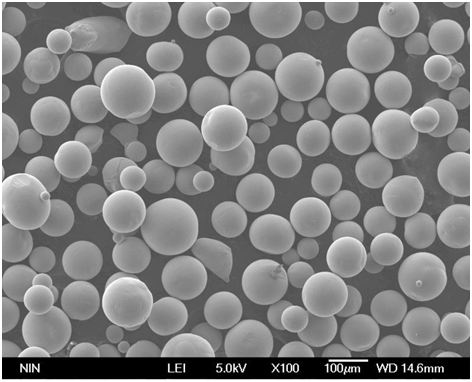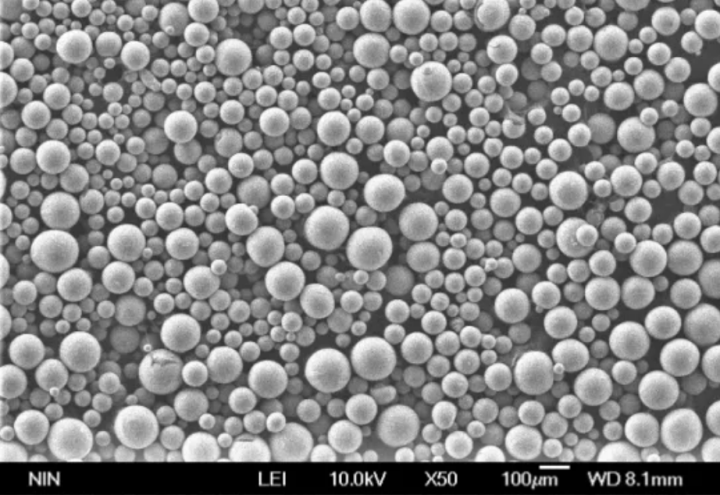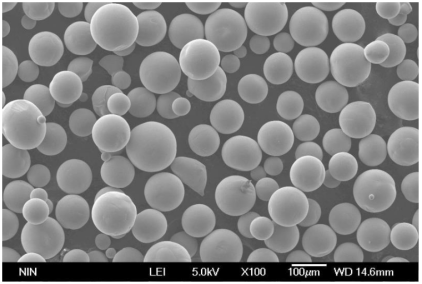Table of Contents
ToggleLow alloy steel powder, a cornerstone of the powder metallurgy (PM) industry, has revolutionized the way we manufacture complex and high-performance metal parts. But have you ever wondered how these tiny metallic granules come to be? Buckle up, because we’re diving deep into the world of low alloy steel powder production methods, exploring their intricacies and the unique properties they impart to the final product.
The Essence of Low Alloy Steel Powder
Before we delve into production methods, let’s establish a clear picture of what low alloy steel powder is. Imagine taking regular steel and breaking it down into microscopic, free-flowing particles. These particles, typically ranging from 10 to 150 micrometers in diameter, boast a slightly different composition compared to their bulk counterparts. The magic lies in the “low alloy” part. By carefully adding small quantities of elements like manganese, chromium, nickel, or molybdenum, manufacturers can tailor the powder’s mechanical properties for specific applications.
This precise control over composition unlocks a treasure trove of benefits. Low alloy steel powder offers superior:
- Strength and Hardness: The addition of alloying elements significantly enhances the strength and hardness of the final product compared to pure iron powder.
- Machinability: Unlike traditionally formed steel, parts made from low alloy steel powder exhibit excellent machinability, allowing for intricate shapes and features.
- Shape Complexity: The free-flowing nature of the powder enables the creation of complex geometries previously unimaginable with conventional methods.
- Near-Net-Shape Manufacturing: PM allows for the production of parts close to their final dimensions, minimizing material waste and machining requirements.

The Production Powerhouse: Unveiling the Methods
Now, let’s unveil the secrets behind the production of these mighty metallic marvels. Here are the four primary methods employed to create low alloy steel powder:
1. The Reduction Method: Transforming Oxides into Metallic Gems
Imagine a hidden treasure chest filled with iron oxide – the rusty cousin of steel. The reduction method unlocks this treasure by using a reducing agent, like hydrogen or carbon monoxide, to strip oxygen away from the iron oxide, leaving behind pure iron particles.
Pros:
- Mature and well-established technology.
- Cost-effective for large-scale production.
Cons:
- Limited control over final powder composition.
- Can result in irregular particle shapes and sizes.
2. The Atomization Production Method: From Molten Metal to Microscopic Marvels
Think of molten steel raining down and solidifying into a shower of tiny metallic droplets. That’s the essence of atomization. In this method, molten steel alloyed with the desired elements is poured through a high-pressure stream of gas or water. The rapid cooling shatters the molten metal into a fine powder with a near-spherical shape.
There are two main subtypes of atomization:
- Gas Atomization: Employs inert gases like nitrogen or argon for a cleaner and more controlled process, ideal for high-performance applications.
Pros:
- Excellent control over powder size and shape.
- Produces high-quality, spherical powder.
Cons:
- More expensive compared to the reduction method.
- Water Atomization: Utilizes water as the atomizing medium, making it a cost-effective option. However, it’s primarily used for less critical applications due to potential oxidation issues.
Pros:
- Lower production cost compared to gas atomization.
Cons:
- Increased risk of oxidation in the final powder.
- Less control over powder size and morphology.
3. Mechanical Alloying Production Method: Shaking Up a Metallic Cocktail
Imagine a high-energy ball mill acting like a cocktail shaker for metal powders. That’s the essence of mechanical alloying. In this method, pre-alloyed or elemental powders are introduced into a high-energy milling environment. The intense collisions between the balls and the powder particles cause fracturing, welding, and diffusion, ultimately creating a uniform powder with the desired alloy composition.
Pros:
- Enables the creation of unique and complex alloy compositions.
- Excellent control over microstructure and properties.
Cons:
- High energy consumption and wear on milling equipment.
- Can introduce contamination from the milling media.
4. Chemical Production Method: A Precise Recipe for Powder Perfection
Think of brewing a potion with just the right ingredients to achieve a specific outcome. The chemical production method operates on a similar principle. Here, precursor compounds containing the desired elements are subjected to chemical reactions, ultimately leading to the formation of the targeted low alloy steel powder.
Pros:
- Highly pure and homogeneous powder with precise control over composition.
Cons:
- Complex and often expensive process.

Specific Metal Powder Models and Applications
The world of low alloy steel powder boasts a diverse range of options, each tailored for specific applications. Here are ten prominent models to whet your appetite:
1. AISI 4140 Low Alloy Steel Powder: A versatile workhorse known for its excellent balance of strength, toughness, and machinability. Commonly used in gears, shafts, fasteners, and other structural components.
Pros:
- Good combination of strength, toughness, and machinability.
- Well-established material with a proven track record.
Cons:
- Not ideal for high-temperature applications.
2. AISI 4620 Low Alloy Steel Powder: Offers superior hardenability compared to 4140, making it a prime choice for parts requiring high wear resistance. Think gears, sprockets, and bearings.
Pros:
- Excellent hardenability and wear resistance.
- Responds well to heat treatment processes.
Cons:
- Lower ductility compared to 4140.
3. Nickel-Chromium-Molybdenum (Ni-Cr-Mo) Low Alloy Steel Powder: This chromium-infused marvel boasts exceptional creep resistance at elevated temperatures. Power generation components, furnace parts, and pressure vessels all benefit from its high-temperature prowess.
Pros:
- Superior creep resistance for high-temperature applications.
- Offers good oxidation resistance.
Cons:
- May require specific processing techniques due to its alloy composition.
4. Copper-Chromium (Cu-Cr) Low Alloy Steel Powder: Known for its enhanced machinability, this copper-infused wonder allows for faster production cycles and tighter tolerances. Think complex automotive components, fasteners, and electronic parts.
Pros:
- Excellent machinability for high-speed production.
- Offers good corrosion resistance.
Cons:
- Lower strength compared to some other low alloy steel powder options.
5. Stainless Steel 316L Low Alloy Steel Powder: The king of corrosion resistance, this powder boasts the exceptional properties of 316L stainless steel in a PM-friendly format. Ideal for applications demanding resistance to harsh environments, like chemical processing equipment and marine components.
Pros:
- Excellent corrosion resistance for demanding environments.
- Biocompatible, making it suitable for medical applications.
Cons:
- Lower strength compared to some low alloy steel options.
- Higher cost due to the presence of chromium and nickel.
6. AISI 9310 Low Alloy Steel Powder: This high-alloy marvel offers exceptional hardenability and strength, making it perfect for aerospace components, gears, and high-performance tools.
Pros:
- Outstanding strength and hardenability.
- Excellent fatigue resistance.
Cons:
- Requires strict control over heat treatment processes.
- Lower ductility compared to some other options.
7. Low Alloy Steel Powder with Soft Magnetic Properties: Engineered for optimal magnetic permeability, these powders are the building blocks of transformers, inductors, and other electromagnetic components.
Pros:
- Tailored for specific magnetic properties.
- Enables the creation of complex magnetic core geometries.
Cons:
- May have limitations on mechanical strength compared to other options.
8. Low Alloy Steel Powder for High-Density Applications: Certain powders are specifically designed to achieve near-theoretical density in the final PM part. This translates to superior mechanical properties for critical applications like gears and bearings.
Pros:
- Achieves high density for improved mechanical performance.
- Offers good dimensional stability.
Cons:
- May require specific processing techniques to achieve full densification.
9. Low-Alloy Steel Powder for Additive Manufacturing: The world of 3D printing has embraced the power of PM. These powders are optimized for additive manufacturing processes like binder jetting and laser sintering, allowing for the creation of complex, near-net-shape components.
Pros:
- Tailored for additive manufacturing technologies.
- Enables creation of intricate geometries.
Cons:
- May require specific post-processing techniques for optimal properties.
10. Custom Low Alloy Steel Powders: The beauty of PM lies in its customization potential. Manufacturers can create unique powder compositions to meet the specific needs of an application. This opens doors for innovative solutions in various industries.
Pros:
- Precise control over powder composition for tailored properties.
- Enables development of application-specific solutions.
Cons:
- Development and qualification of custom powders can be time-consuming and expensive.

Advantages and Limitations of Low Alloy Steel Powder
Weighing the Pros and Cons: A Balanced Perspective
Low alloy steel powder offers a compelling package of benefits, but like any material, it comes with its own set of limitations. Let’s delve deeper into both sides of the coin to help you make informed decisions.
Advantages:
- Superior Mechanical Properties: Low alloy steel powder boasts enhanced strength, hardness, and wear resistance compared to pure iron powder. This translates to parts that can withstand demanding applications.
- Design Flexibility: The free-flowing nature of the powder enables the creation of complex geometries that would be challenging or impossible with traditional manufacturing methods. This opens doors for innovative product design.
- Near-Net-Shape Manufacturing: PM allows for the production of parts close to their final dimensions, significantly reducing material waste and machining requirements. This translates to cost savings and improved production efficiency.
- Material Efficiency: Low alloy steel powder offers excellent material utilization. Unlike traditional methods that generate scrap, PM allows for near-complete utilization of the starting material.
- Dimensional Accuracy: PM processes enable the production of parts with tight tolerances, minimizing the need for extensive post-processing steps.
- Tailor-Made Properties: By carefully controlling the alloying elements, manufacturers can create powders with properties specifically suited for the target application.
Limitations:
- Production Cost: Compared to traditional bulk metal processing, PM can be a costlier proposition, especially for high-volume production runs. The cost of the powder itself and the specialized equipment involved contribute to this factor.
- Part Size Limitations: The current PM technology has limitations on the size of parts that can be economically produced. While intricate shapes are achievable, large-scale components might be better suited for traditional methods.
- Powder Segregation: During handling and storage, finer powder particles can segregate from the coarser ones. This can lead to inconsistencies in the final part properties and requires careful handling techniques.
- Process Complexity: PM involves a series of steps, from powder production to compaction and sintering. Each step needs to be precisely controlled to achieve the desired properties in the final part.
- Post-Processing Requirements: Depending on the application, PM parts might require additional post-processing steps like heat treatment or machining to achieve optimal performance.

FAQ
Here, we answer some frequently asked questions to shed further light on the world of low alloy steel powder:
Q: What are the typical sizes of low alloy steel powder particles?
A: Low alloy steel powder particles typically range from 10 to 150 micrometers in diameter. However, the specific size distribution can vary depending on the desired application and the production method.
Q: How strong are parts made from low alloy steel powder?
A: The strength of parts made from low alloy steel powder depends on the specific powder composition and the processing parameters. However, they can achieve tensile strengths exceeding 1000 MPa, making them suitable for demanding applications.
Q: Can low alloy steel powder parts be recycled?
A: Yes, a significant advantage of PM is its inherent recyclability. Scrap parts or excess powder can be reintroduced into the production cycle, minimizing waste and promoting sustainability.
Q: What are some of the emerging applications of low alloy steel powder?
A: The future holds immense potential for low alloy steel powder. Areas like additive manufacturing, metal injection molding (MIM), and biocompatible implants are witnessing exciting developments leveraging the unique properties of PM.
In Conclusion
Low alloy steel powder presents a compelling proposition for a wide range of applications. By understanding its production methods, properties, and limitations, you can make informed decisions about its suitability for your specific needs. From its design flexibility to its near-net-shape manufacturing capabilities, low alloy steel powder continues to revolutionize the way we manufacture complex and high-performance metal parts. As technology advances and research delves deeper, the future of this versatile material promises even brighter possibilities.






